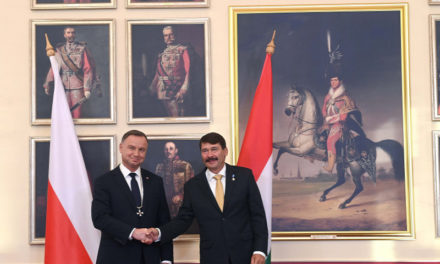While the left-wing public pours forth from every corner that salaries in this country are humiliatingly low due to the government's fault and that a livelihood crisis has developed because of this, the reality shows a completely different picture. A good example of this is that last year and this year, the real value of the minimum wage and the guaranteed minimum wage increased over the course of two years. The value of the smallest salaries increases in times when war, the failed EU sanctions policy and the processes of the world economy simultaneously increase inflation.
We can note a real wage increase in 2022-2023 for the lowest earnings. The statement - in the strict sense of the word - might not cause a particular sensation in peacetime, but now it is definitely of special importance. The Russian-Ukrainian war that broke out last year and the erroneous EU sanctions introduced in response to it simultaneously raised the price of energy and food, but inflation was also strengthened by certain processes in the world economy. But let's see the numbers!
In Hungary, the minimum wage increased by 19.5 percent and the guaranteed minimum wage by 18.7 percent in 2022. The growth did not stop this year either, the former form of payment jumped by another 16 percent and the latter by 14 percent.
This also means that during these two years the minimum wage increased by 38.6 percent overall, and the guaranteed minimum wage by 35.3 percent.
Meanwhile, inflation was 14.5 percent last year, and according to calculations, it may reach 15 percent this year. Based on all of this, in 2022-2023, the real value of the minimum wage may increase by 5.3 percent and the guaranteed minimum wage by 2.8 percent over the two years. And this is a significant result - it is worth repeating - at a time when, in addition to a global crisis, war is raging in our neighbor, and the Union is making it difficult for its own economy to function with faulty sanctions. It should be mentioned here that, in addition to wage conditions, the utility reduction also helps families, with the government's measure leaving HUF 181,000 per month in the wallets of every family.
It is worth lingering a bit on the development of the real value of the smallest earnings. The statistics show that
Since 2010, the real value of the minimum wage and the guaranteed minimum wage has largely increased. Between 2010 and 2023, the real value of the former increased by nearly 78 percent, and the latter by approximately 87 percent.
And the Gyurcsánys?
It is also not uninteresting to recall what Ferenc Gyurcsány did with the minimum wage during the economic crisis.
At the beginning of 2008, the minimum wage was HUF 69,000 during the government of the left, which today talks about a living crisis and humiliatingly low wages. In the second half of the year, the crisis hit with brutal force, and on January 1, 2009, the minimum wage was raised to around HUF 2,500. A year later, when half the country was looking for a way out of foreign currency loans and unemployment, the minimum wage increased to HUF 73,500 after another HUF 2,000 increase.
The difference between the governments' crisis management methods is obvious on this basis alone.
Source: Hungarian Nation
Featured image: mandiner.hu













